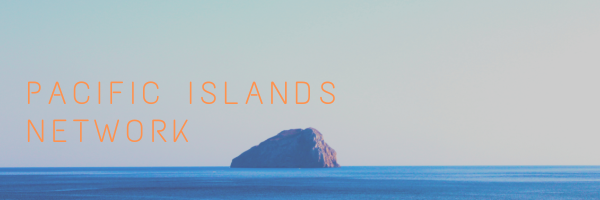Island Conservation Efforts: Protecting Endangered Species
Exploring various islands around the world has been a dream come true, and I’m eager to share my experiences and recommendations with my readers. But as I reflect on my travels, I’m also struck by the importance of island conservation efforts and the crucial role they play in protecting endangered species. Island ecosystems face unique challenges, and the impact of human activity on these fragile environments can be devastating. Yet, there are success stories to be found, and I’m eager to highlight some of the conservation efforts that are making a difference. Join me as we explore the world of island conservation and learn how we can all get involved in protecting these precious habitats and the species that call them home.
The Importance of Island Conservation Efforts
As a travel blogger who has explored various islands around the world, I have witnessed firsthand the unique beauty and fragility of island ecosystems. These ecosystems are home to a diverse range of species, many of which are found nowhere else on earth. However, island ecosystems are also particularly vulnerable to human activities and environmental changes, making them a critical focus for conservation efforts.
Island conservation efforts are crucial for protecting endangered species for several reasons. Firstly, many island species are highly specialized and have evolved in isolation, making them particularly vulnerable to habitat loss, invasive species, and other threats. Secondly, island ecosystems are often small and isolated, making it difficult for species to migrate or adapt to changing conditions. Finally, island ecosystems are often located in areas with high levels of human activity, such as coastal regions, making them particularly vulnerable to pollution, overfishing, and other human impacts.
Despite these challenges, there have been many successful island conservation efforts around the world. For example, the Galapagos Islands in Ecuador have been the focus of extensive conservation efforts for several decades, resulting in the recovery of several endangered species, including the Galapagos giant tortoise and the Galapagos penguin. Similarly, the Seychelles Islands in the Indian Ocean have implemented a range of conservation measures, including habitat restoration and invasive species control, resulting in the recovery of several endemic bird species.
These success stories demonstrate the importance of island conservation efforts and the potential for positive outcomes when conservation measures are implemented effectively. By protecting island ecosystems and the species that depend on them, we can help to preserve the unique biodiversity of these regions and ensure that future generations can continue to enjoy their beauty and wonder.
Endangered Species on Islands
During my travels, I was fortunate enough to witness some of the most unique and endangered species found on islands. From the Galapagos tortoise to the Hawaiian monk seal, these animals are not only fascinating but also crucial to the health of their respective ecosystems. However, these species face numerous threats, including habitat loss, invasive species, and climate change.
One example of an endangered species on an island is the Philippine eagle, found only on the islands of Luzon, Samar, Leyte, and Mindanao. These eagles are threatened by deforestation and hunting, and their population has declined to less than 800 individuals. Conservation efforts, such as habitat restoration and anti-poaching measures, have been implemented to protect these majestic birds.
Another example is the Iberian lynx, found only on the Iberian Peninsula. Habitat loss and fragmentation, as well as hunting and road accidents, have led to a decline in their population. However, conservation efforts, such as captive breeding and habitat restoration, have helped increase their numbers from less than 100 individuals in 2002 to over 400 in 2021.
It is important to recognize the threats facing these endangered species and take action to protect them. By supporting conservation efforts and advocating for their protection, we can ensure that these unique and important species continue to thrive on our planet.
Endangered Species on Islands
During my travels, I was fortunate enough to witness some of the most unique and endangered species found on islands. From the Galapagos tortoise to the Hawaiian monk seal, these animals are not only fascinating but also crucial to the health of their respective ecosystems. However, these species face numerous threats, including habitat loss, invasive species, and climate change.
Conservation efforts aimed at protecting these species are essential. One example is the work being done to protect the critically endangered Philippine eagle on the island of Mindanao. The Philippine Eagle Foundation is working to protect the eagle’s habitat and educate local communities on the importance of conservation. Another example is the successful reintroduction of the Bermuda petrel on Nonsuch Island, where conservationists have worked to remove invasive species and restore the island’s ecosystem.
As travelers, we have a responsibility to protect the places we visit and the species that call them home. By supporting conservation efforts and being mindful of our impact on the environment, we can help ensure that these unique and endangered species continue to thrive for generations to come.
Conclusion
In conclusion, island conservation efforts are crucial for protecting endangered species and preserving the unique ecosystems found on these islands. Throughout my year-long trip exploring various islands around the world, I witnessed firsthand the beauty and fragility of these environments. It is our responsibility to take action and support conservation efforts to ensure that these species and habitats are protected for future generations to enjoy.
I am excited to share my experiences and recommendations with my readers, and I encourage everyone to learn more about island conservation efforts and how they can get involved. By volunteering, supporting organizations, and spreading awareness, we can make a difference in protecting these precious ecosystems. Let’s work together to ensure a sustainable future for our planet and all its inhabitants.
Originally posted 2023-04-17 18:11:35.
